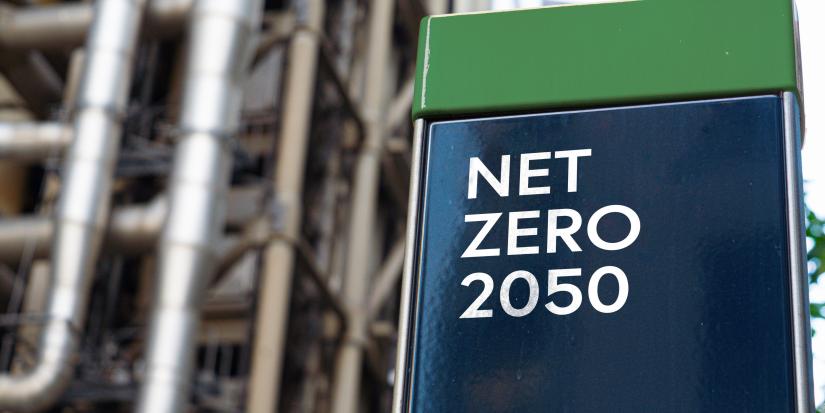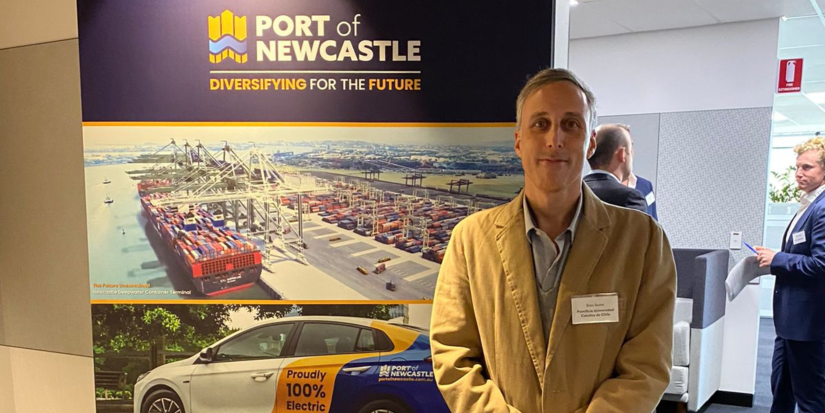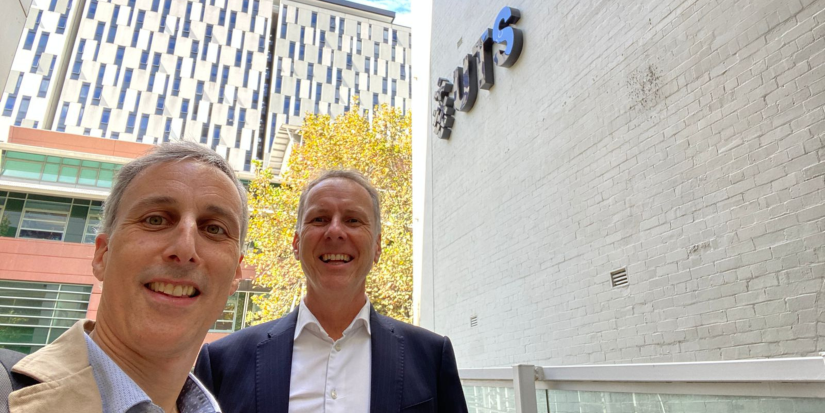A new research partnership between UTS and UC is putting green hydrogen and ammonia in the net zero hot seat.

Australia's commitment to net zero emissions by 2050 will need clean and renewable energy to help achieve this goal.
The phrase ‘net zero’ has experienced increasing prominence over the past decade. Achieving net zero greenhouse gas emissions is essential for achieving the goals set out by the 2015 Paris Agreement, and Professor Damien Giurco, Associate Director of Research at the University of Technology Sydney’s Institute for Sustainable Futures (ISF), says it’s critical we move towards this goal — fast.
“Deploying 21st century sources of energy generation — clean energy, renewable energy — is going to be really important,” Professor Giurco says.
Implementing green energy solutions comes with sophisticated challenges. As part of the university’s Key Technology Partnerships (KTP) Visiting Fellow program, Professor Giurco is collaborating with Professor Enzo Sauma, Researcher at the Energy Research Centre at Pontificia Universidad Catolica de Chile (UC), to confront these challenges.
The production of green hydrogen and ammonia is very intensive in the use of electricity, so you need a lot of renewable energy. Chile and Australia have an abundance of those resources.
Professor Enzo Sauma
Researcher, UC Energy Research Centre
Professor Giurco and Professor Sauma’s research will investigate best practice for facilitating the role hydrogen and ammonia can play in supporting a green energy economy.
An intercontinental collaboration
In many ways, the union of Australian and Chilean sustainability expertise is ideal.
“The production of green hydrogen and ammonia is very intensive in the use of electricity, so you need a lot of renewable energy,” says Professor Sauma.
“Chile and Australia have an abundance of those resources.”
The two nations are, however, at different stages of infrastructure development.

Professor Enzo Sauma visited the Port of Newcastle during his visit to UTS.
In early May 2023, Professor Sauma visited UTS for two weeks to engage with fellow researchers and the wider community. During his stay, he travelled with ISF to the Port of Newcastle to learn about the Clean Energy Precinct. Plans to transform the port into a fully integrated clean energy industrial hub for green hydrogen and ammonia are underway.
Visiting the port allowed him to get a feel for the Australian context.
“In Chile, we are currently building pilot projects, small projects. It’s good to see that other countries are moving to really big projects,” he says.
Professor Giurco hopes to visit Professor Sauma in Chile in August to continue their intercontinental collaboration.
“We want to do what’s going to be good in our countries,” says Professor Giurco, “but if we’re thinking about what works well for global impact, we need to understand other contexts.”
“Having the opportunity to be familiar with and work on research that includes both contexts is a really nice part of the opportunity.”
Confronting green energy challenges
The construction of the Clean Energy Precinct will face challenges including resource and land use that are prevalent across the green energy landscape. Considering the optimal trade-off point between domestic and global energy markets, Professor Giurco says, is Professor Sauma’s expertise.
“If you have a lot of renewable energy for hydrogen production, but then you satisfy the electricity demand of the local population with thermoelectric resources like coal, that’s not a good plan,” Professor Sauma says.

Professor Sauma (left) and Professor Giurco (right) enjoyed discussions with fellow researchers at the Institute for Sustainable Futures.
At the ISF, Professor Giurco leads government and industry-focused research at the intersection of decarbonisation and the circular economy. The latter is a system of reuse and regeneration that green hydrogen and ammonia can energise.
This economic model involves, “...designing resources to circulate effectively in the economy in ways that reduce our footprint,” explains Professor Giurco.
“Then, that [circulation] can be powered by renewable energy.”
Having enough people to install, operate and maintain this new infrastructure means universities have an important role in building the knowledge and skills for that future workforce.
Professor Damien Giurco
Associate Director of Research, UTS Institute for Sustainable Futures
These cultural and expertise crossovers will continue to expand, with the Professors jointly supervising PhD students and researchers as they conduct analyses of the land and infrastructure requirements for the deployment of green hydrogen and ammonia.
“Having enough people to install, operate and maintain this new infrastructure means universities have an important role in building the knowledge and skills for that future workforce,” says Professor Giurco.
At UTS, the Global Strategic Partnerships program facilitates high-impact collaboration with universities around the world. To date, the KTP Visiting Fellow program has supported 330 academics to develop collaborative projects, expand their international connections, produce research with worldwide social impact, and gain cross-cultural experience.
Professor Enzo Sauma’s visit was co-funded by the Chilean National Agency for Research and Development (ANID), UC and the UTS Key Technology Partnerships Visiting Fellow program.
→ Click here to learn more about UTS Global Strategic Partnerships.

